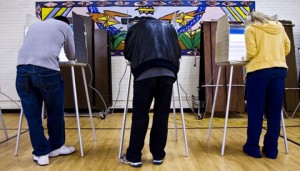01 Dec MID-TERM ELECTIONS & STOCKS
 Historically, these events tend to help equities.
Historically, these events tend to help equities.
You may have heard that stocks tend to rally in fall and winter. That has often been the case. In fact, the S&P 500 and the Dow have gained repeatedly after the elections occurring in the third year of a first-term presidency.
These elections seem to elate Wall Street. While past performance is no indication of future success, consider this: Wall Street has witnessed rallies after every mid-term election since 1942.1
The Leuthold Group, a Minneapolis-based investment research firm, has determined that the S&P 500 has gained an average of 18.3% in the 200 days following such elections. Widening the window of time, Goldman Sachs finds that the S&P has averaged an 18.1% advance during the 12 months following each of the 15 mid-term elections since 1950. (The gain averages 11.0% when control of Congress changes hands.)1,2
Consider another intriguing statistic regarding mid-term election years: in the five instances since 1942 when an incumbent first-term president was a Democrat, the S&P 500 has gained an average of 21.3% for the year.3
The Dow may get a tailwind from the “third-year effect”. Since 1945, the third year of a presidential election cycle has tended to be very positive for the Dow. As MarketWatch columnist Mark Hulbert noted recently, the DJIA has averaged +24.7% in such 12-month periods (usually measured in fiscal years, i.e., 4Q-1Q-2Q-3Q) since the end of World War II. In fact, the Dow’s average returns in other fiscal years of a presidential term have been puny in comparison: +4.0% in year one, +1.9% in year two and +3.3% in year four.4
Last month, Standard & Poor’s chief investment strategist Sam Stovall told the Wall Street Journal that the DJIA has risen an average of 17.1% in calendar years following mid-term elections since 1945, with less than 10% of these years seeing selloffs.5
Will 2010 follow the historical pattern? Excellent question – after all, no one is clairvoyant. This year, stocks have not followed the longstanding trends. Stocks typically do badly in September, yet September 2010 actually turned the market around. When it comes to November, let’s hope history repeats.
Kevin M. Nast is a Financial Advisor and the President of NastGroup Financial in Northville, MI 48167. He may be reached at nastgroupfinancial.com or 248.347.1888. Kevin also services clients in West Bloomfield, Farmington Hills, Bloomfield Hills, Auburn Hills, South Lyon, and the surrounding metro Detroit area as well as 13 additional states across the US.
\These are the views of Peter Montoya Inc., not the named Representative nor Broker/Dealer, and should not be construed as investment advice. Neither the named Representative nor Broker/Dealer gives tax or legal advice. All information is believed to be from reliable sources; however, we make no representation as to its completeness or accuracy. The publisher is not engaged in rendering legal, accounting or other professional services. If other expert assistance is needed, the reader is advised to engage the services of a competent professional. Please consult your Financial Professional for further information. wwyaregistry.com
LD37432-10/10
Citations.
1 – kiplinger.com [10/12/10]
2 – foxbusiness.com [10/5/10]
3 – cnbc.com [9/27/10]
4 – marketwatch.com [10/4/10]
5 – online.wsj.com [9/25/10]
The Dow Jones Industrial Average is an unmanaged index of common stock that tracks changes in stock prices of the 30 most significant and commonly traded U.S. industrial stocks on the New York Stock Exchange. Past performance does not guarantee future results. It is not possible to invest directly in an index.
The Standard and Poor’s Index of 500 Common Stocks is an unmanaged index of common stocks and is frequently used as a general measure of market performance. An investor cannot invest in the S&P 500 directly. Past performance is no guarantee of future results.




Sorry, the comment form is closed at this time.